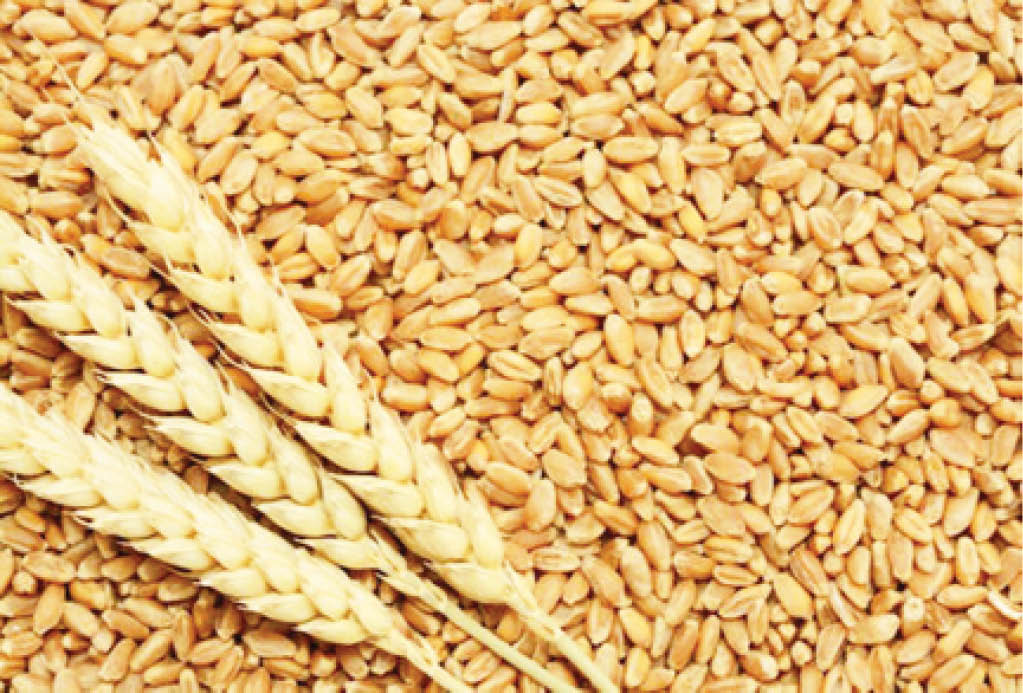Wheat is one of the most important raw materials used in Nigeria for bread and cake (85-99%), Semovita (10%), biscuits (about 4%), pasta (below 1%) and macaroni and spaghetti (below 1%). Its production is largely done in the dry season, between the November 15 and March 15 growing window
According to the National Agricultural Extension and Research Liaison Services, Ahmadu Bello University Zaria, wheat is commonly milled at 75-76% extraction rate. The offal (residues) is used in feed mills in compounding livestock feeds.
The National Agricultural Extension and Research Liaison Services (NAERLS), in a production manual sponsored by the Federal Ministry of Agriculture and Rural Development through the Agricultural Rural Transformation Programme (ARTP), highlighted the following, slightly edited procedures, for farmers to adopt to produce good wheat.
There are two major classes of commercial wheat
1. Bread wheat
2. Macaroni wheat or durum wheat
Bread wheat covers about 90% of the wheat area and makes up about 94% of harvest while macaroni wheat (durum), covers about 9% of the wheat area but constitutes only 5% of the world’s harvest. Minor species of wheat, of which club wheat is the most important, account for the remaining area and production.
The major difference between the types of commercial wheat is that the kernel of durum wheat is typically large, heavier and harder than those of bread wheat.
Also, durum dough is less elastic than bread wheat and therefore inferior for producing leavened loaves. Durum wheat is often used for macaroni and spaghetti.
Growth-habit classification
Based on growth habits, wheat can be classified into three groups: Winter-habit wheat, Spring-wheat and Facultative wheat.
These terms, spring, winter and facultative wheat have a broader meaning than the season in which the crops are grown. Winter habit wheat is sown in autumn. Winter wheat tends to mature before the onset of the hot dry summer while spring wheat varieties have better resistance to stem rust and loose smut diseases.
Spring-habit wheat varieties, by contrast, have a continuous growth circle generally 3-6 months and no inactive period. They cannot survive sustained low temperatures. These are the ones grown in areas like Nigeria where there is no winter.
Varieties
Farmers are advised to use the varieties recommended for their areas or contact their nearest agricultural extension officer of the Ministry of Agriculture or state agriculture development project or the liaison offices of the NAERLS for advice on the choice of varieties.
Sources of improved wheat seeds
Good quality seeds are very difficult to get from the open market. Different farmers grow different varieties. Sometimes a farmer may grow two or more varieties. Occasionally, these varieties are mixed up during harvesting or during transportation or in storage or during sale.
It is also common to find weed seeds in the seeds of wheat due to lack of proper cleaning of the wheat seeds during winnowing. Therefore, farmers should buy from research institutes or accredited seed companies.
Seed treatment
To protect the seeds from pests and birds before and after germination, it is recommended that seeds be dressed with appropriate seed dressing chemicals prior to planting. This will ensure a high percentage of germination, good plant density and high grain yield. The recommended seed dressing chemical is Apron Star 50DS
Time of planting
For optimum yield, the sowing date should be timed to avoid subjecting the crop to high temperature, especially during the time of flowering to grain filling and also rainfall during harvesting.
It is recommended that sowing be carried out between the first week of November and mid-December.
Late planting may result in poor yield as well as high aphid and stem borer attacks. Researchers are presently developing rain-fed varieties along with their agronomic practices.
Seed rate
About 120-140 kg/ha of seed is required to plant a hectare. Higher seed rates may cause serious competition among stands for space and nutrients, which may result in poor tillering and low yield.
Sowing can be done by drilling or by broadcasting. While drilling may produce uniform stand and earlier seedling emergence compared with broadcasting, the latter is less vigorous; requires a thorough burying of seeds by raking and higher seed rate.
Fertiliser application
Blanket application of 1 00kg N/ha (7% bags of CAN) and 50kg P2 05/ha (5% bags of SSP) for all soils except the sandy soils of Sokoto Rima and Hadejia Jama’are River Basin areas are recommended for the river basin areas mentioned above, which have been reported to be deficient in potassium (K) and also for other sandy soils.
These fertiliser recommendations equal four bags of NPK two bags of SSP. For all three, 20:10:10 or 15:15:15 (NPK) compounds can be used.
Water management
Irrigation is necessary for wheat growing in Nigeria because of the period (dry season) during which the crop is cultivated. In general, sandy soil should be irrigated more frequently than clay soil because it loses water more easily than clay soils through quick infiltration and percolation.
For sandy-loam soils, an irrigation interval of 5 days is recommended. But in medium to heavy soils recommended irrigation interval is 7 – 8 days.




